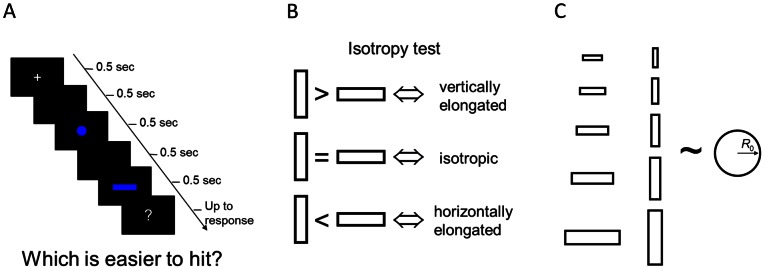Figure 2. The choice task.

A. Example of a trial. A rectangle and a circle were displayed sequentially. Subjects were prompted “which is easier to hit? 1st or 2nd?”. B. Illustration of the isotropy test. One way to test the isotropy of subjects' model of the motor error distribution is to compare subjects' equivalent radius for horizontal and vertical rectangles of the same size. It amounts to comparing the “hittability” of horizontal and vertical rectangles. If the subject correctly assumes that the end points of her movement are vertically elongated, the subject would judge the vertical rectangle as easier to hit than the horizontal one. Instead, the assumption of an isotropic distribution would lead to indifference between the two; the assumption of a horizontally elongated distribution, a preference favoring the horizontal rectangle. C. Conditions. In Experiment 1, the rectangle in a pair had two possible orientations and five possible sizes. For each rectangle the radius of the paired circle was adjusted by an adaptive staircase procedure to obtain the equivalent radius,  . The set of rectangles used in Experiment 2 was similar except that there were four instead of five possible sizes. See Methods.
. The set of rectangles used in Experiment 2 was similar except that there were four instead of five possible sizes. See Methods.
